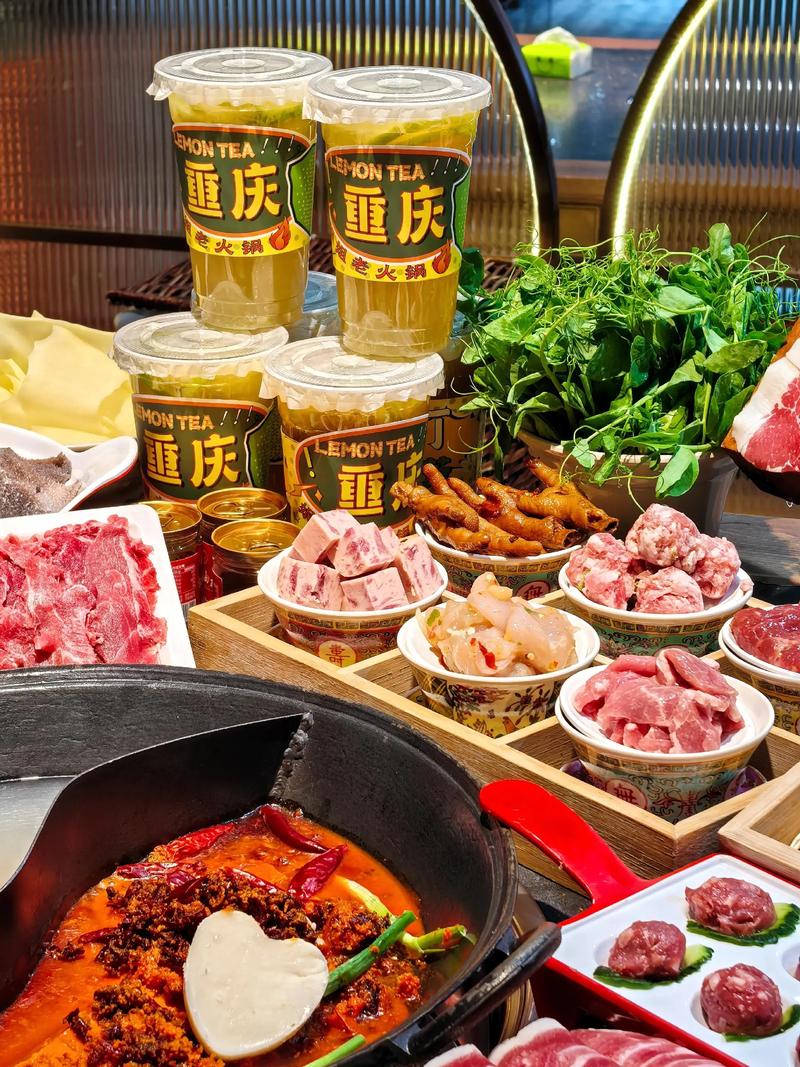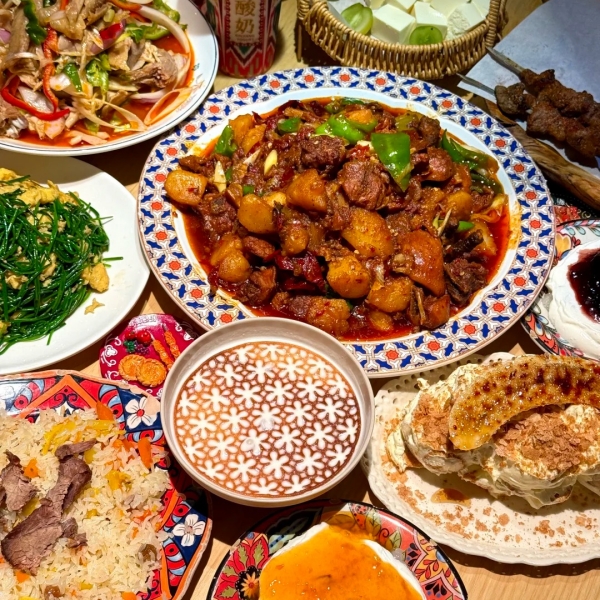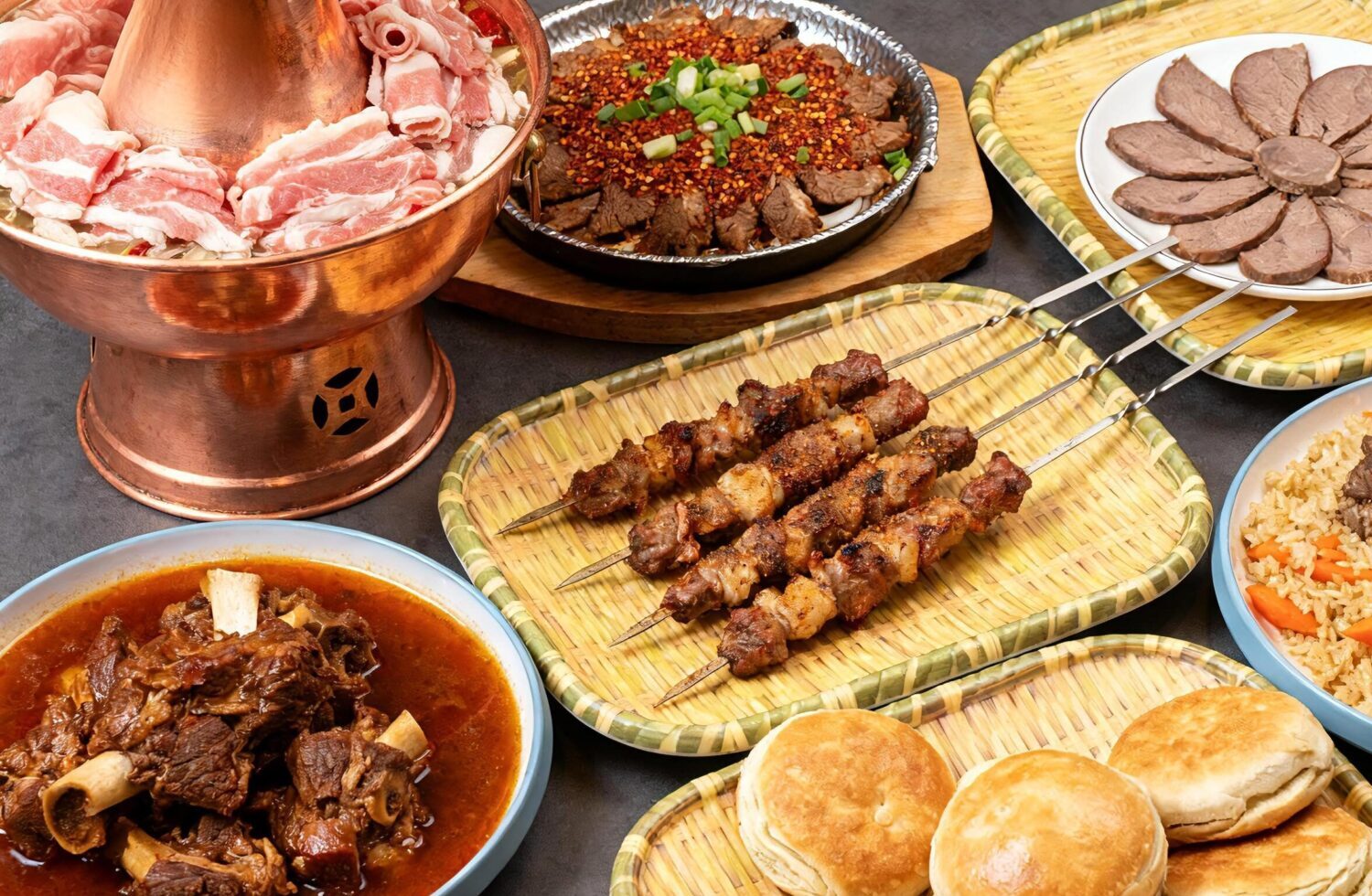China’s fiercely fiery snack Weilong Latiao, which began in school canteens, is now stocked in aisles of foreign groceries and in TikTok feeds. This 2025 guide tries to parse why it got so big, how exactly people are eating it, where to buy it and how travelers can learn to love it, because one of these days they’re probably going to take a bite.
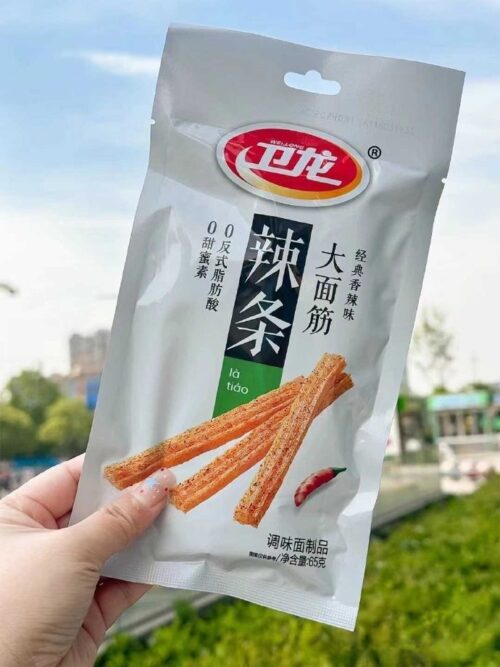
Weilong latiao
Why Is Weilong Latiao So Popular?
From Local Shops to Global Branding: The Weilong Journey
If you ask a Chinese millennial what snack symbolized his or her school years, odds are good you’ll hear about Weilong Latiao. Not a hip brand” — but the inexpensive, spicy strip you picked up for a couple of yuan at a dusty corner shop, 20 years ago when you were bored and stoned in the dorm room and needed a quick snack, and now unexpectedly your tongue encounters something vaguely familiar. Kids adored it because it was daring and new, a spicy snack that did not cost more than pocket change. Eventually, Weilong transmuted this underground street-food energy into clean-cut, modern branding. By 2015, its red-and-white logo began appearing in supermarkets throughout China, and not long after, in duty-free shops and even on Amazon listings abroad. What had started out life as a “junk snack” suddenly had the sheen of a brand ready for export, which may have felt almost surreal to those who grew up snacking on it under their desks.
If Weilong Latiao blew your mind, you’re not done yet—read 10 Popular Chinese Snacks: From Packaged Favorites to Street Food Classics for more irresistible finds.
How Young People and Social Media Made It a “National Snack”
This second wave of popularity was about more than taste — it was about memes, TikTok challenges and nostalgic narrative power. On Douyin (the Chinese version of TikTok), you can see people in their 20s unwrapping Weilong packs like treasure and joking that this is “our generation’s caviar.” Vloggers in Beijing and Shanghai filmed themselves while sweating through a bag, laughing about how addictive they found it. K-pop idols or influencers dropping that they had eaten some Latiao back stage only compounds the fandom effect. Suddenly it wasn’t just a snack; it was cultural shorthand — like saying you’ve had ramen in Japan or churros in Spain.
What Foreign Travelers Say: Unveil Latiao First Time
First-time guests to Weilong, for many, are a mixture of curious and surprised. You could be walking into a 7-Eleven shop in Shanghai, come across rows of narrow red packs and think that it looks like beef jerky — until you learn that the red strips consist of wheat gluten. The texture is stringy, oily, its chili flakes stick to your lips longer than you think they will. A few visitors write on Reddit that they just couldn’t stop eating midway through, despite being “kind of scared” of the bright red oil. Some call it an immediate throwback to snacks of their childhood, only with a Chinese spin. There’s a frisson of doing something so mundane for locals and incredibly exotic for everyone else — stepping into a daily slice of China that feels as if it could come with a dare.
If you’ve seen Weilong snacks trending worldwide, you’ll want to read — Big Latiao: China’s Spicy Strip That Went Global
Is Weilong Latiao Healthy?
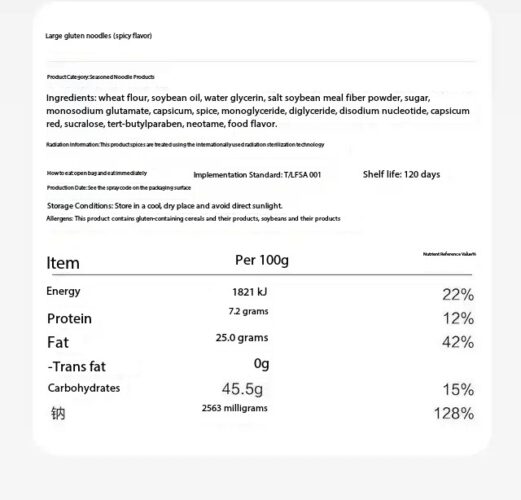
ingredient list
The Ingredients and What They Actually Mean
Look at the back of a Weilong Latiao pack and you’ll see wheat flour, chili powder, soy sauce, MSG, and lots of oil. The mix isn’t strange, but the balance leans heavy on flavor enhancers. That oil is what makes the sticks chewy and glossy, yet it also adds a surprising weight to every bite. A single portion runs around 200–250 calories, but the catch is that hardly anyone stops at just one. Salt is another issue—one small pack can load you with a third of your daily recommended intake. So while it feels like a fun street snack, it stacks up like a fast-food treat on paper.
For a deeper look at what actually goes inside each stick, you can check our guide here: What Is Latiao Made Of? A Spicy Deep Dive Into China’s Viral Snack.
Local Warnings and Official Responses
Back in 2017, a few Chinese provinces even tried banning Latiao sales near schools after low-quality knockoffs caused food scares. Most of those cases weren’t Weilong’s fault, but the stigma stuck. Parents still complain about kids eating it like a meal. In response, Weilong launched campaigns showing sterile production lines, stainless-steel vats, and workers in lab coats. The brand keeps repeating the phrase “clean factory,安心吃” on packaging. Doctors remain cautious, though: for children, it’s considered a once-in-a-while snack; for adults, it’s “fine in moderation.”
What Foreigners Should Keep in Mind
For travelers, Latiao is best treated like Takis or Flamin’ Hot Cheetos—spicy, addictive, but not salad-level healthy. Some visitors report mild stomachaches after eating too many, especially late at night with beer. Others shrug it off, saying it’s no worse than chips back home. Weilong has recently introduced “light” baked versions with less oil, aiming to win health-conscious buyers. If you’re curious, try the smaller packs first. Eat it alongside plain rice crackers or milk tea to soften the spice. And remember, part of the fun of travel is finding the snack that makes you laugh later—“I shouldn’t have eaten that much, but it was worth it.”
The Most Popular Weilong Latiao Products and Their Features
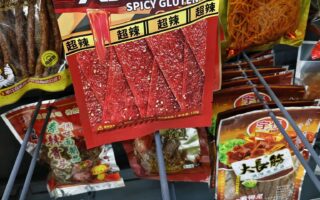
Latiao Products
Classic Spicy Sticks Everyone Knows
When people say “Latiao,” they usually mean the long red strips packed in clear plastic. Weilong’s classic spicy sticks are the face of the brand. They’re chewy, soaked in chili oil, and carry that MSG kick which makes you want more even when your tongue burns. Some packs cost as little as 2 RMB in convenience stores across China, making them the go-to pocket snack for students. What sets Weilong apart is the texture: softer than most local copies, less likely to stick in your teeth. It’s the original taste foreigners get hooked on after a night market run.
Mini Latiao and Baked Versions
Not everyone loves the greasy shine of the classics, so Weilong has been busy diversifying. Mini Latiao—shorter, bite-sized pieces—fit better with beer sessions, kind of like spicy peanuts in Western pubs. Then there’s the “baked” series, less oily, marketed as healthier. They come in resealable pouches, easy to throw into a backpack. The flavor is milder, and some travelers say they taste closer to barbecue jerky than chili candy. The company clearly aims these at adults who grew up with Latiao but now worry about blood pressure. It’s their way of saying: you can still snack, just feel less guilty.
Oddball Flavors and Limited Editions
Weilong also experiments. In recent years you could find tomato-flavored Latiao, wasabi-coated ones, even a “mala hotpot” version. These aren’t always hits, but they show up in Chinese supermarkets as seasonal runs. Foreigners often buy them as souvenirs—cheap, colorful, and very “China.” On Douyin (Chinese TikTok), you’ll see unboxing videos where influencers rank the weirdest flavors. Personally, the tomato one tasted like ketchup-soaked noodles, not my favorite. But that’s the point: part snack, part novelty. If you’re visiting China, picking up a handful of random flavors feels like a safe gamble—you might hate one, but you’ll definitely remember the moment you tried it.
Where to Buy Weilong Latiao as a Foreigner
Buying Online Before Your Trip
If you’re outside China but already curious, you don’t need to wait until landing in Beijing or Shanghai. Weilong Latiao is all over international e-commerce. On Amazon, sellers bundle them in 10–20 packs, usually around $12–18, though prices swing a lot depending on shipping. Asian grocery platforms like Yamibuy (popular in the US) or Shopee in Southeast Asia also carry them. The only catch? Freshness. Sometimes the sticks arrive a little harder than what you’d grab at a corner shop in Chengdu. Reviews often mention customs delays too, especially in Europe. Still, if you want a taste before your trip, online is the easiest door. And yes—watch out for fakes, since Weilong had to issue warnings about counterfeit packaging a few years ago.
Picking Them Up in China
Once you’re in China, it’s nearly impossible to miss Weilong Latiao. They sit by the cashier in FamilyMart, 7-Eleven, and local shops. A small pack costs just 2–3 RMB, while bigger pouches are around 8–12 RMB. You’ll also find bulk boxes on Taobao or JD.com if you’re comfortable using a local app—just make sure to choose “海外购” (overseas shipping) if you plan to bring some home. The fun part? Buying them fresh and cheap on the spot feels different from paying inflated prices abroad. Plus, many travelers say the snack hits differently when eaten on a noisy Chinese train, or while strolling through a night market. It’s not just food—it’s part of the trip memory.
How People Eat Weilong Latiao in China
Wrapped in Jianbing
One of the quirkiest ways you’ll see weilong latiao eaten is inside a jianbing (煎饼), China’s famous street breakfast. Picture this: a thin egg crepe sizzling on a hotplate at 7 a.m., the smell of scallions sharp in the air, a vendor smearing bean paste and sprinkling sesame seeds. Then—unexpectedly—they slap a couple of spicy latiao sticks right in the middle before folding it up. The crunch of the fried dough sheet mixes with the chewy spice of the latiao, making every bite hot, sweet, and savory. A jianbing with latiao usually costs around 6–8 RMB in Beijing’s hutong stalls. Locals laugh that it’s a “student upgrade,” because it turns a regular breakfast into something bold and fiery.
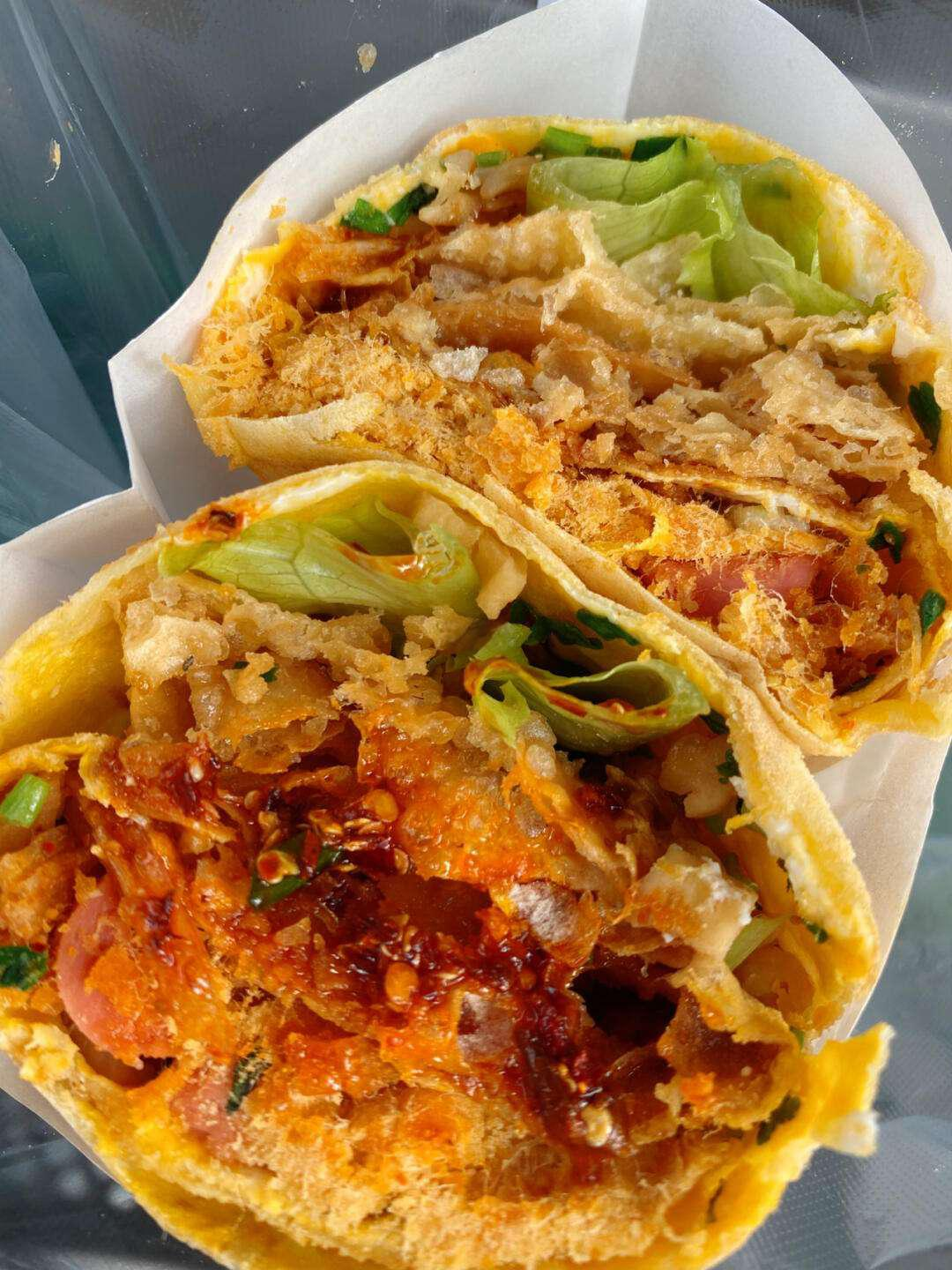
Jianbing
Rolled into Shaobing or Roujiamo
Another snack hack: using weilong latiao as stuffing in bread. You’ll see this in shaobing (flaky sesame bread) or even tucked inside roujiamo, the “Chinese hamburger” from Xi’an. It sounds odd—meat plus spicy flour sticks—but the result is smoky, oily, and satisfying. I once saw a high school group in Xi’an swap out regular fillings for straight-up latiao inside their roujiamo, laughing as the chili oil dripped onto their uniforms. The vendor didn’t even blink; it’s that normal to experiment. Depending on the city, this combo runs from 10–15 RMB. It’s the kind of street food mix you wouldn’t find neatly packaged online, which makes it more fun to try on the ground.
A Hotpot Surprise
Believe it or not, people even drop weilong latiao into hotpot broth. In Chongqing or Chengdu, where the soup already swims with chili and peppercorns, tossing in a couple of latiao sticks feels almost redundant—yet it adds that extra chew. Some locals dunk them briefly, almost like noodles, while others let them soak until soft. In student circles, it’s a cheap way to make hotpot more playful, since a single bag costs just 2 RMB. You won’t find it on any official menu, but if you’re at a casual hotpot spot and ask, the staff won’t be surprised. It’s a tiny detail that shows how deeply this snack has seeped into daily food culture.
For travelers curious about weilong latiao, the short answer: it’s okay in moderation. You won’t get sick from a couple packs bought at a supermarket like Walmart China or Hema (盒马). The official Weilong flagship store on Tmall Global even sells export versions with English labels, meeting international food safety rules. The issue isn’t poisoning, it’s balance—too much salt, too much oil. If you treat it like a fun snack, fine. But if you replace meals with it, you’ll feel sluggish fast. Locals joke that it’s “青春的味道” (the taste of youth), which might be the best reminder: it’s more nostalgia than nutrition.
FAQ About Weilong Latiao
Q: Is Weilong Latiao safe to eat?
A: Yes, it’s safe if you buy from official stores or big supermarkets. Weilong has modern factories and food safety certifications. Just don’t overeat—it’s high in oil and salt.
Q: Is Weilong Latiao halal?
A: Some Weilong products are labeled halal, but not all. If you need halal-certified snacks, check the packaging carefully or buy from official halal shops.
Q: Where can I buy Weilong Latiao near me?
A: In China, you’ll find it in Walmart, Hema, and convenience stores. Abroad, try Amazon, Asian supermarkets, or Tmall Global for export versions.
Q: What are the ingredients of Weilong Latiao?
A: The main ingredients are wheat flour, soy protein, chili oil, salt, and spices. Preservatives are added for shelf life, which is why it’s considered more of a snack than a healthy food.
Q: How many calories are in Weilong Latiao?
A: Around 450 kcal per 100 grams. A small 20g packet is about 90 kcal. It’s calorie-dense, so treat it like chips rather than a meal.
Q: What does Weilong Latiao taste like?
A: Chewy, spicy, a little oily, and very addictive. Some compare it to beef jerky soaked in chili oil, but with a softer bite.
Q: What is Weilong Konjac snack?
A: It’s another popular product line by Weilong. Instead of flour sticks, it uses konjac (a low-calorie plant), making it chewier and lighter than regular latiao.
Q: Is Latiao unhealthy?
A: It’s not poison, but it’s not healthy either. High in sodium and oil, it’s fine as an occasional snack but not daily food.
Q: Is Weilong Latiao vegan?
A: Most versions are plant-based (wheat, soy, chili), but some may use flavorings that aren’t strictly vegan. Always check the label if this matters to you.
Q: Can I cook with Weilong Latiao?
A: Yes! Locals wrap it in jianbing, stuff it in bread, or drop it into hotpot. You can also crush it and sprinkle over rice or noodles for an extra kick.
